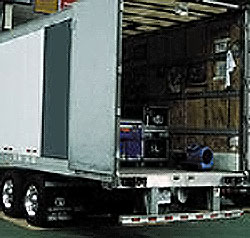
Moving Along…
Table of contents. A quick, complete listing of all the pages in the package, provided with page numbers. Enough said.
Distance and delay parameters. Perhaps one of the most important items, because modern sound systems often have very sophisticated digital delay devices at several points in the signal chain.
Proper use of these tools is well beyond the scope of this article, but the primary point is that these factors can be made clear and easy to understand by including the venue’s common delay times and distance measurements.
Further, the setup of some loudspeaker systems, including line arrays, is dependent upon proper data entered into spreadsheets to calculate angles between cabinets, the number and location of different types of cabinets within an array, and so on.
You say you don’t have this information? Well, make it a priority! It just takes a bit of time and a couple of tools.
A laser distance device and tape measure are essentials, and a computer based delay finder is a definite plus.
Every venue is different, so let’s look at the basics. Factors such as proscenium width, stage depth and rigging grid height are essential.
Also useful is data regarding times from downstage center to point “x” – for example, the balcony rail, guest and house mix positions, or notable seating positions.
In addition to distance in feet and meters, times to these points should be calculated or measured or both and listed in milliseconds.
I find it helpful to measure the exact distance between various points of the house sound system. At the Fox Theater, there is a large center array of 12 loudspeakers hung in front of the proscenium.
With the laser, I’ve measured the distance to the under balcony loudspeakers, the front row of the orchestra level, and the last row of seating in the balcony, to name a few. These measurements have been verified and fine tuned by computer delay finders.
One other thing to include on this page is any delay already in place on the house sound system that’s also likely to be used by a touring show, i.e., underbalcony delay loudspeakers or lobby fills.
Having this info in print and at the ready saves a lot off, “uh, I’m not sure, I’ll have to go check.”
Plus, it makes you appear to be on top of things, even if you’re the aforementioned person dealing with too little sleep far too early in the morning.
